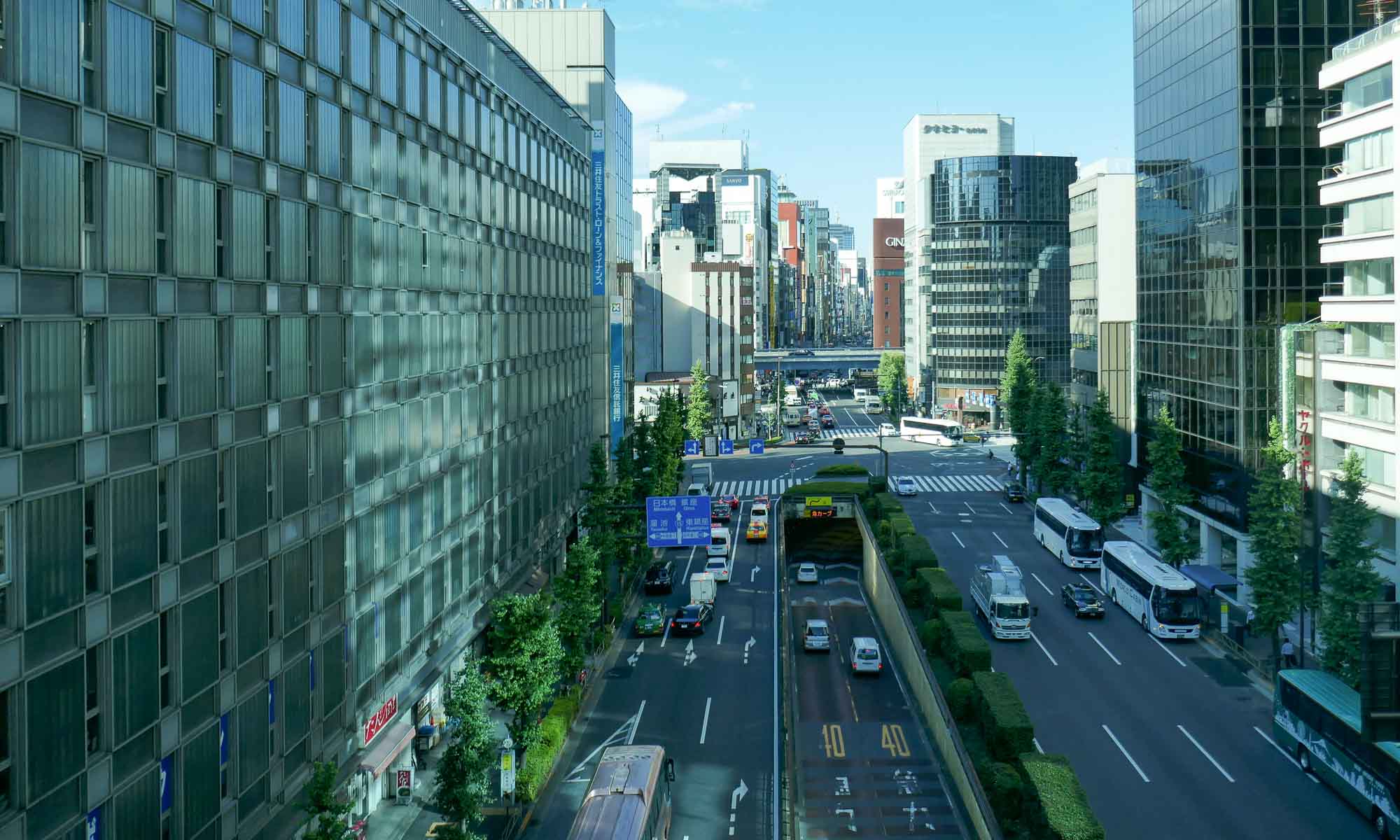Hanoi, the previous capital of North Vietnam became the capital of the reunified Vietnam after the end of the Vietnam war. Prior to that, it had been occupied at one time or the other by the Chinese, Japanese and French, and traces of those cultures can be found today. This can be seen in the great number of cultural sites scattered around the city.
A rapidly growing city, with a mixture of old and new, the cityscape continues to change with the rise in the number of skyscrapers. It is the home of the two tallest buildings in Vietnam, the Landmark 72 Tower and Lotte Center.

Similar to Saigon, scooters appear to outnumber the population, and though they are driven with what might appear as no rules, fewer accidents than might be expected occur. Crossing the street and stepping out in front of oncoming traffic is not for the faint of heart, but we soon became experts after we learnt a few tips from locals.

Highlights of Hanoi
Our first priority upon arriving in Hanoi was to obtain the visa for China. However, upon arrival at the Chinese Consulate, we learnt that no visas were, at that time, available for foreign tourists (i.e. non-Vietnamese visitors to China). As a result of this, we ended up spending close to 2 weeks in Hanoi, attempting to obtain the visa, and subsequently taking the time to amend our itinerary. This enabled us to visit the length and breath of Hanoi at a slower pace.

Hanoi Kids
After our delightful experience in Saigon with Saigon Hotpot, we signed up with a similar outfit, Hanoi Kids. We spent the first day with two of their volunteers exploring the Old Quarter and the French Quarter.
Old Quarter
The heart of Ha Noi, and the area most visited by tourists, the Old Quarter is made up of colonial architecture, temples and pagodas. Filled with narrow alleyways and streets lined with shops selling everything from local produce to fake MIV (Made-in-Vietnam) clothes and local art, it is an area buzzing with activity. The area is also swarming with hotels, restaurants, bars and cafes. To sample the local fare, there is a nightly food market every Friday, Saturday and Sunday evening.

The best way to get the feel of the Old Quarter is to walk around and get lost. We spent a lot of time wandering through the streets and discovering the various markets scattered around, as well as a number of ruins including O Quan Chuong, the only remaining gate of the ancient Thang Long citadel.


Hoan Kiem Lake
Situated just slightly to the fringes of Old Quarter, this lake is popular with locals who walk/run the circumference of the lake. Towards the south of the lake lies Turtle Tower, built in 1886 to commemorate a warrior in the legend of the “magic sword’.


In the north of the lake sits an islet connected by a red bridge, on which lies Ngoc Son Temple which was built in 1841. The temple is dedicated to Tran Hung Dao, who is said to have aided in the defeat of the Mongol army during an attempted invasion back in the 13th century. Oddly, within the temple are the purported preserved remains of a large turtle (250kg) found in the lake.

Admission fee: VND 20,000
St Joseph’s Cathedral
The cathedral was built by a French missionary in the neo-Gothic classical style. and is the oldest cathedral in Hanoi. During the Vietnam war, the catholic church was persecuted and the church was closed down. It was not until 1990 that the church reopened for mass.

The cathedral is located about a 5 minute walk from the southern part of Hoan Kiem lake and is surrounded by a number of bars, restaurants and shops.
French Quarter
The French Quarter with its wide tree-lined roads and French colonial building is remarkably different from the Old Quarter, though barely a stone’s throw away. As we walked around we passed the Hanoi Opera House, large shopping malls, upscale restaurants and boutiques. This was where we were able to locate Starbucks and Pandora.

Hoa Lo Prison
Also known as Maison Centrale, or Hanoi Hilton, the prison was built by the French in 1896. The prison covered an area of 12,908 square metres, and was built as a place to hold Vietnamese prisoners who were fighting for independence. Prisoners were subject to inhumane circumstances, as well as torture and execution at the hands of the French. Despite the conditions, the prisoners were able to communicate with each other and the outside world. In March 1945, over 100 political prisoners escaped, some of whom subsequently became leaders in the North Vietnamese government.


During the Vietnam war, the prison was in use again, and was where a number of Vietnam revolutionaries and American POW’s were held including John McCain. It was at this time that it was sarcastically called “Hanoi Hilton”. Though the plaques in the museum state that the prisoners had some of the best living conditions, this has been disputed by prisoners who were subsequently released, and stated they were subject to torture and inhumane conditions.


Admission fee: VND 30,000
Hanoi Presidential Palace
The Presidential Palace was built in 1900 by the French for the Governor-General of Indochina. After independence, it was to be the home of Ho Chi Minh, but he instead chose to live in a traditional Vietnamese stilt-house. The palace is built in a colonial style and set in within beautifully manicured gardens. Visitors are not allowed inside the palace but are able to wander around in the gardens.

Admission fee: VND 25,000
Ho Chi Minh Mausoleum
Located close to the presidential palace, in the center of Ba Dinh Square, the mausoleum is the final resting place of Ho Chi Minh. It was modeled after Lenin’s mausoleum in Russia, and was opened to the public in 1975. We chose not to visit the Mausoleum, and after realising that his embalmed body lies in the center of it in a glass case, we were more than happy with our choice.

Admission fee: VND 0
The Imperial Citadel of Thang Long
Though there is not much to see, attesting to its importance in Vietnamese history it was made a UNESCO World Heritage Site in 2010. Unfortunately most of the citadel was destroyed in the 19th century, and the only remaining buildings are the Doan Mon gate, the Flag Tower, the steps of Kinh Thiên Palace and the Hậu Lâu (Princess’ Palace).



During the Vietnam war, it was used as headquarters for the North Vietnamese army under the command of General Giap, and given the code name D67. A set of bunkers under the citadel were used for emergency evacuation.

In 2003, extensive ruins dating back to the Thang Long dynasty were discovered across the street, which can be visited with the same ticket.
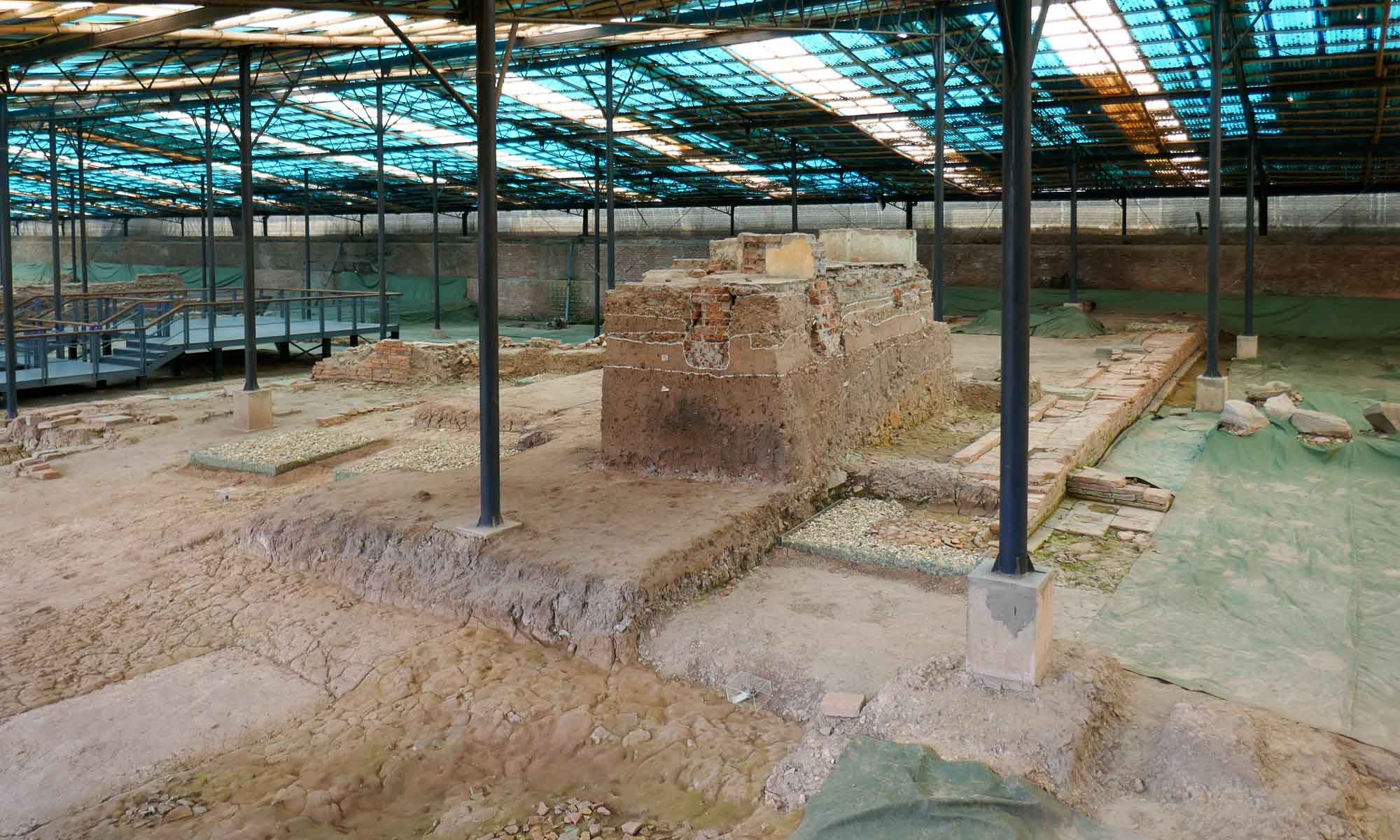
Admission fee: VND 30,000
Vietnam Military History Museum
The museum is located behind the citadel and now includes the Flag Tower from the citadel. It exhibits a large number of artifacts of items captured during the various wars, including fighter jets and weaponry.

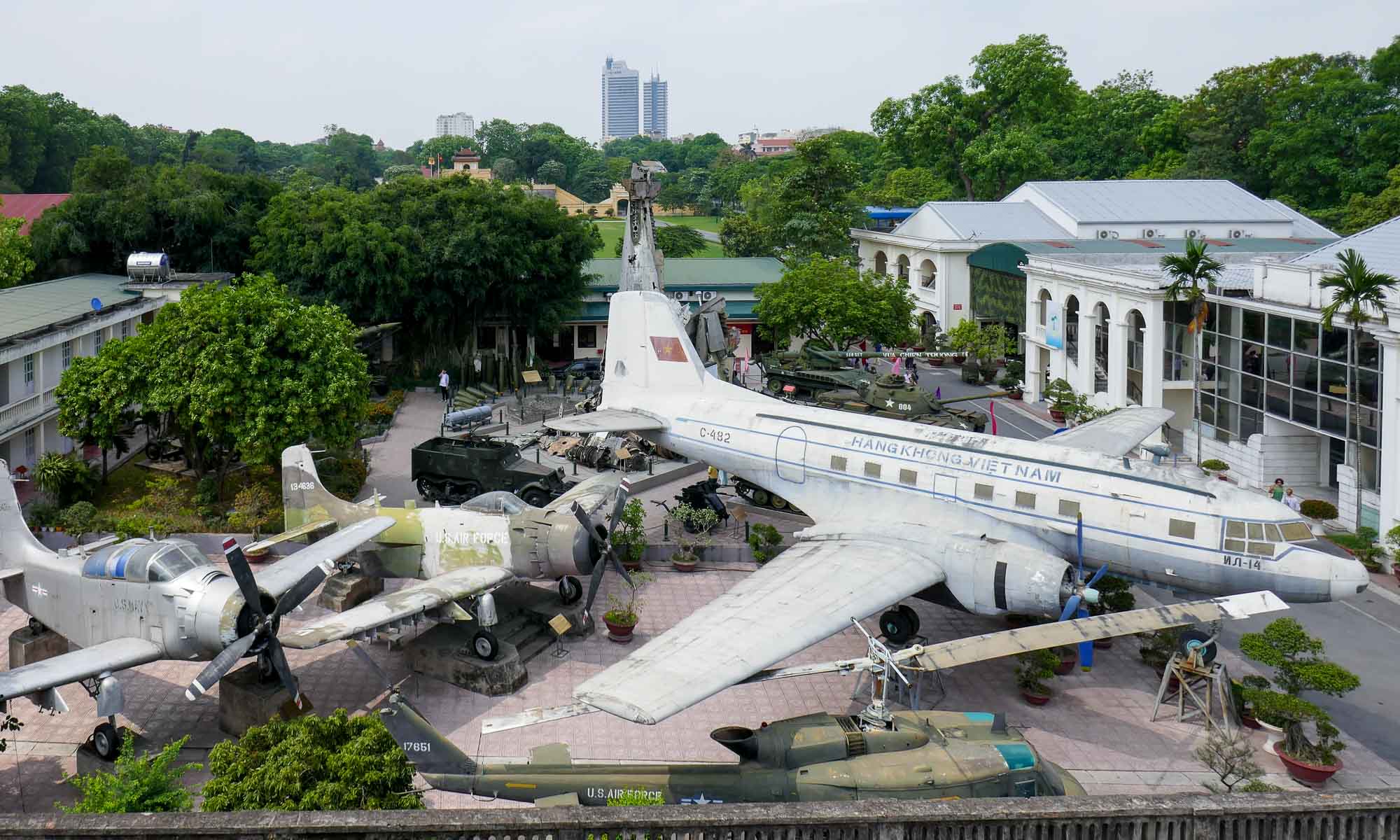
Admission fee: VND 40,000; VND 30,000 for cameras.
Temple of Literature
Built as a university dedicated to the study of Confucius in 1970, the temple is now a museum and showcases traditional Vietnamese architecture.
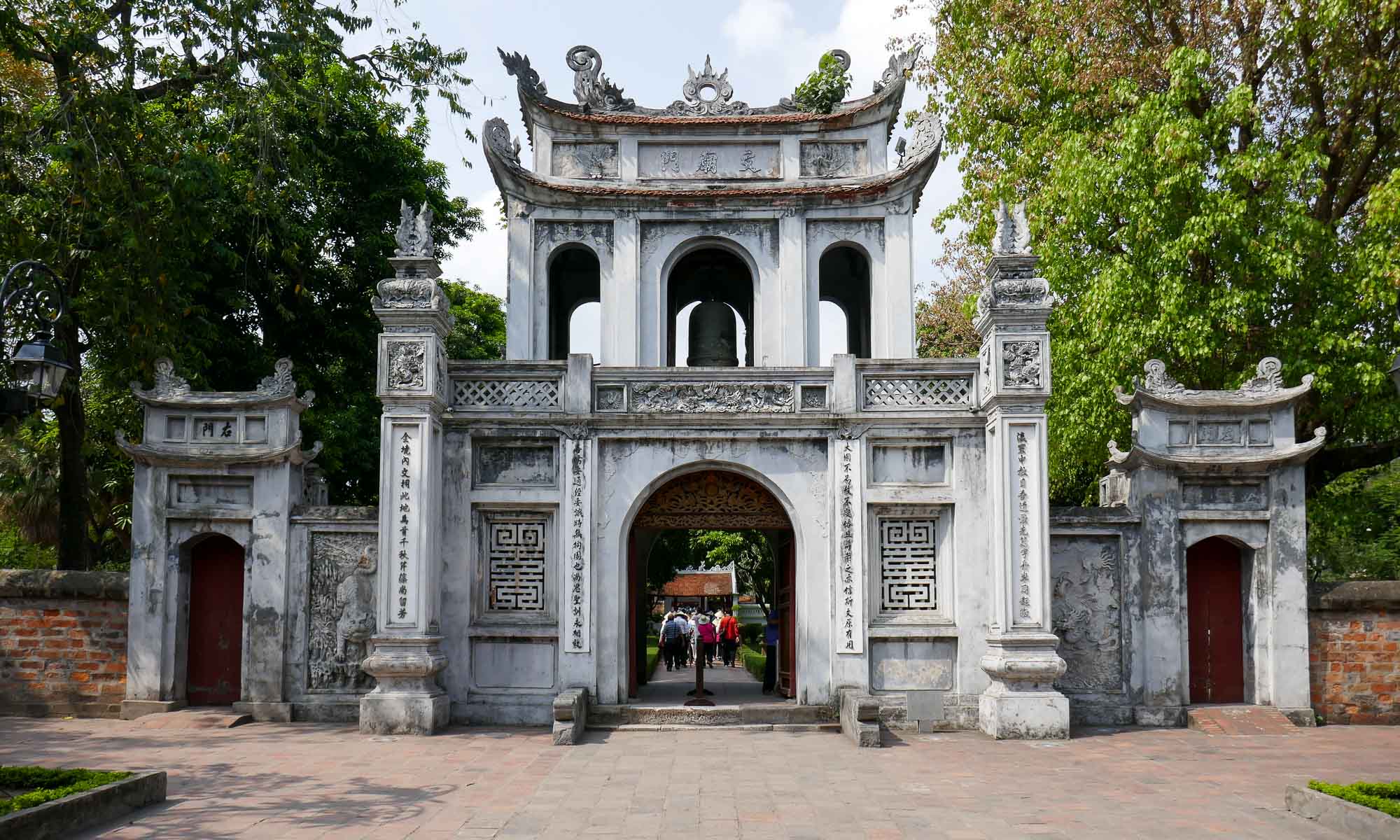


Admission fee: VND 30,000
B-52 Lake – Huu Tiep Lake
The remnants of a B-52 aircraft used by the US Air Force, which was shot down by the North Vietnam army have been mostly maintained where they fell. To be honest, there is not much to see here, and it only further assists in the propaganda mill.

Vietnam Ethnology Museum
Opened to the public in 1997, the museum is located about 8 km from the center of Hanoi. The museum highlights the different ethnic groups in Vietnam, with details of their living styles, religious rituals, and even includes life-size replicas of their homes.




We spent a good 2 hours visiting the museum and found it to be quite informational.
Admission fee: VND 40,000
Lotte Center Hanoi
The best views of Hanoi can be seen from Lotte Center Hanoi. The second tallest building in Vietnam, it stands at a height of 267 m. Within the building is a shopping mall, hotel, serviced apartments, offices and an observation deck. The observation deck is at 253 m, and offers 360 degree views of Hanoi. The views highlight the fact that Hanoi is more than the French Quarter or the Old Quarter, and includes areas that are common to any modern city. We were surprised to see that there were hardly any people at the observation deck, but glad to note that we were therefore able to spend as much time as we wanted on the two “skywalks” (glass floored sections).



After our visit we found out that instead of paying the fee for the observation deck, we could have gone up to the rooftop bar and restaurant for free, with a minimum required purchase.
Admission fee: VND 230,000
Hanoi Ceramic Mosaic Mural
The end result of an idea proposed by a journalist during a competition, the mosaic covers the Hanoi dyke wall for a length of 6 km. Various Vietnamese artists and individuals sponsored by foreign embassies worked on the mural which was completed to mark the millennial anniversary of Hanoi in 2010. It was added to the Guinness Book of World Records as the world’s longest ceramic mosaic.
Unfortunately, the location of the mosaic does not make it easy to get to, as it is on the other side of a busy highway. However, dodging traffic we made our way across and walked down for about 1km.



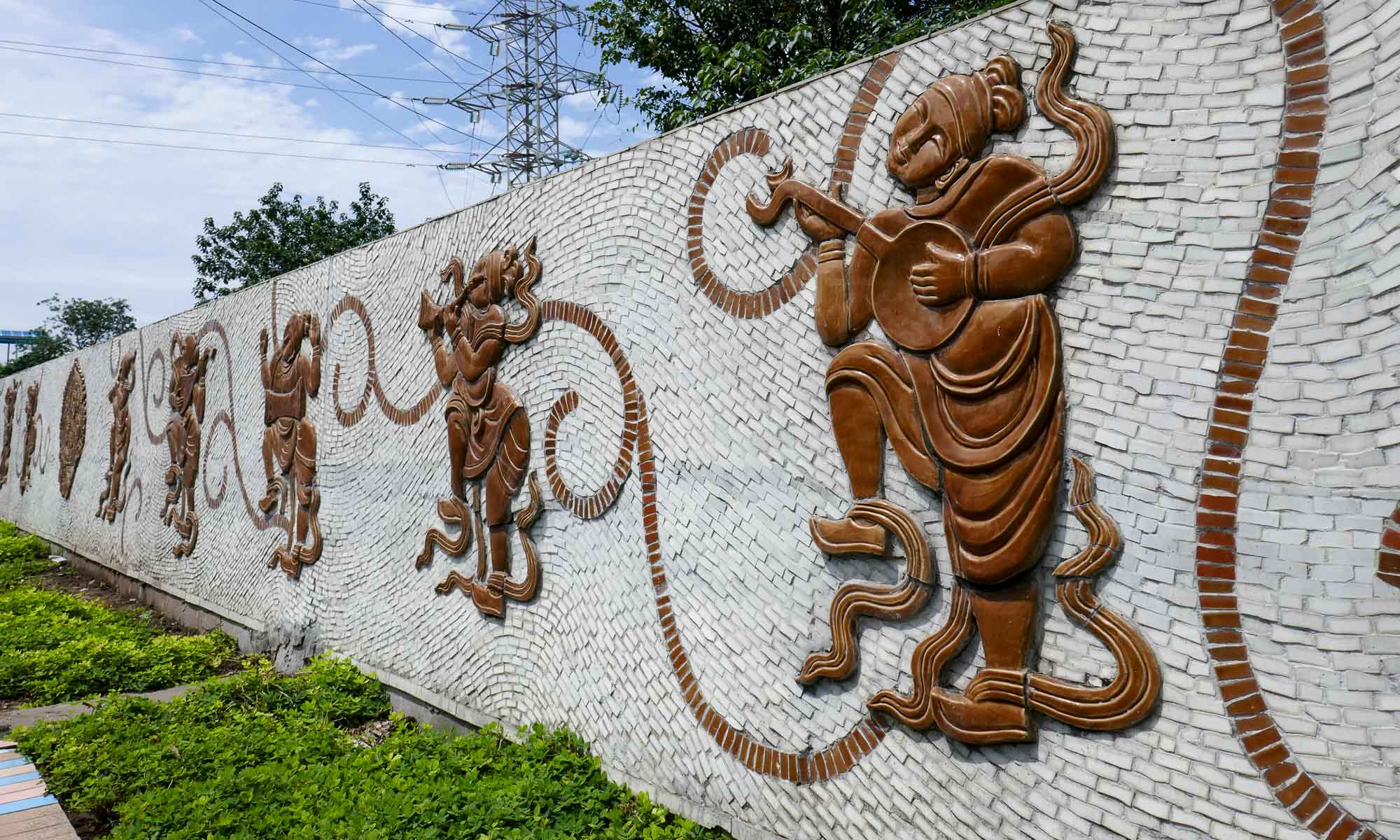
Dining in Hanoi
One thing we noted in Vietnam, and Hanoi in particular was the overwhelming reliance on Tripadvisor that owners of restaurants had. It was not only common to get requested to leave a review, but as part of the marketing, to observe at the entrance of the restaurants Tripadvisor signs stating how they are rated on the site.
Banana Tree
The Banana Tree is a small clean family-owned restaurant with a unique decor. The food options though limited were good and affordable, and we ended up dining here at least three times. During the weekend, as part of the night market a small kitchen stall is installed outside and attracts both locals and tourists.

Don Duck
Highly rated on Tripadvisor as a good “Cheapeats” place we visited this place on our first night. We met the owner who has an interesting story and is very personable. The food was decent and affordable, but what made it a memorable night were the free shots of a homemade brew offered by the owner.

Blue Butterfly
While pricier than our normal selections, we decided to splurge out. Famous for its cooking class, the food was of good quality.

P.K. Spice
This Indian/Pakistani/Afgan restaurant is popular with locals and tourists. Compared to the Indian restaurant we visited in Hue, the portion sizes were much smaller and more expensive. Nevertheless, the food was good.
Sleeping in Hanoi
Hanoi Elite Hotel
Located down a quite alley in the Old Quarter, this gem of a hotel became our home for 9 nights. With only 12 rooms, the boutique hotel is compact, and has no lift. Rooms and bathrooms were small, but each available square meter was put to good use. Breakfast included both Western and Vietnamese options, and were made to order. The staff were exceptional and went out of their way to assist us a number of times.
Somerset Hoa Binh Hanoi
Since we were unable to get the Chinese visas we ended up staying in Hanoi longer than intended and therefore decided to move to a serviced apartment. Somerset was a remarkable set of apartments, with several amenities we were unable to make use of. The staff were friendly and professional.
Getting to Hanoi
For the 2 hour train journey to Hanoi from Ninh Binh we ordered soft seat tickets. The ride was comfortable and uneventful. After spending the past few weeks in the country side and small towns arriving in Hanoi was like a shock to the system. The train was met by hoardes of people attempting to coerce the weary traveler to fall for their exorbitant offers for a cab ride. We rejected all offers and made our way to a hotel not far from the station, where we ordered a GrabCar.
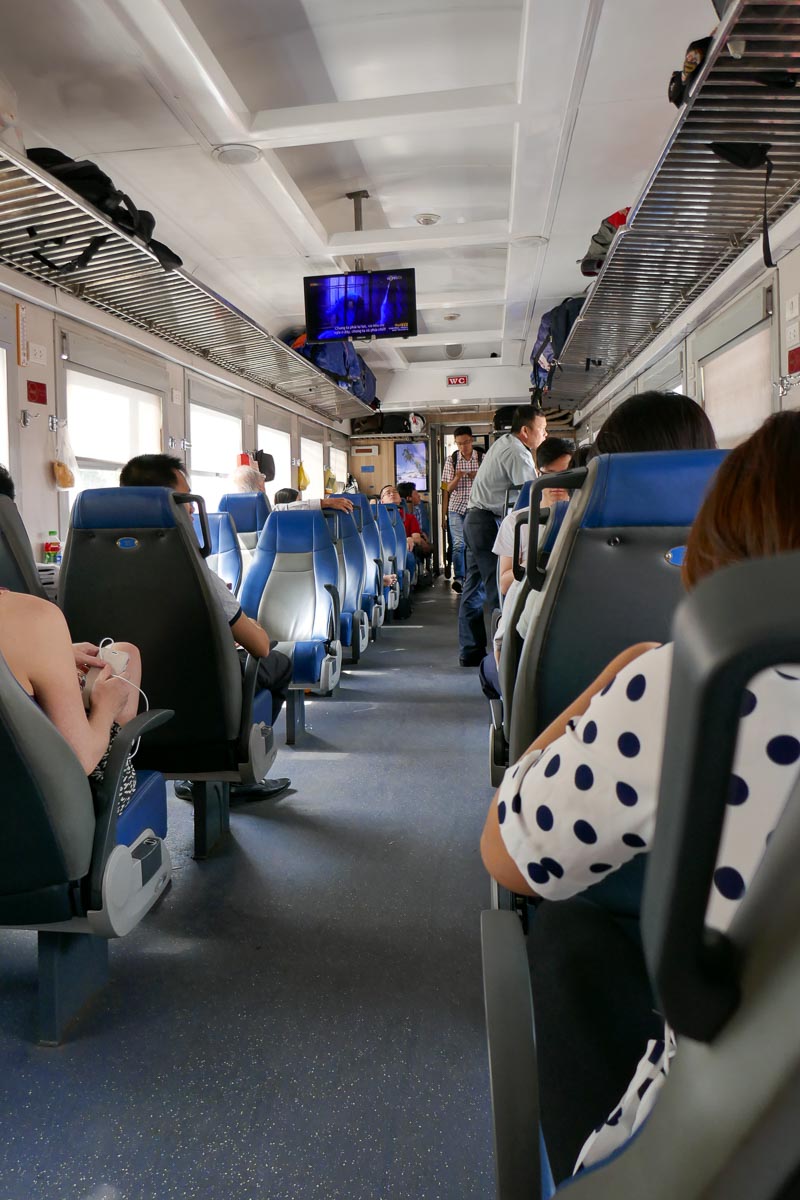

Getting around Hanoi
For the fearless, the best way to get around is by scooter. We refrained from riding a scooter, and either walked or took the bus. Hanoi has a good bus system, with fares based on regions and distance. Most buses stop at the Hoan Kiem Lake, which is right in the middle of the tourist area.



